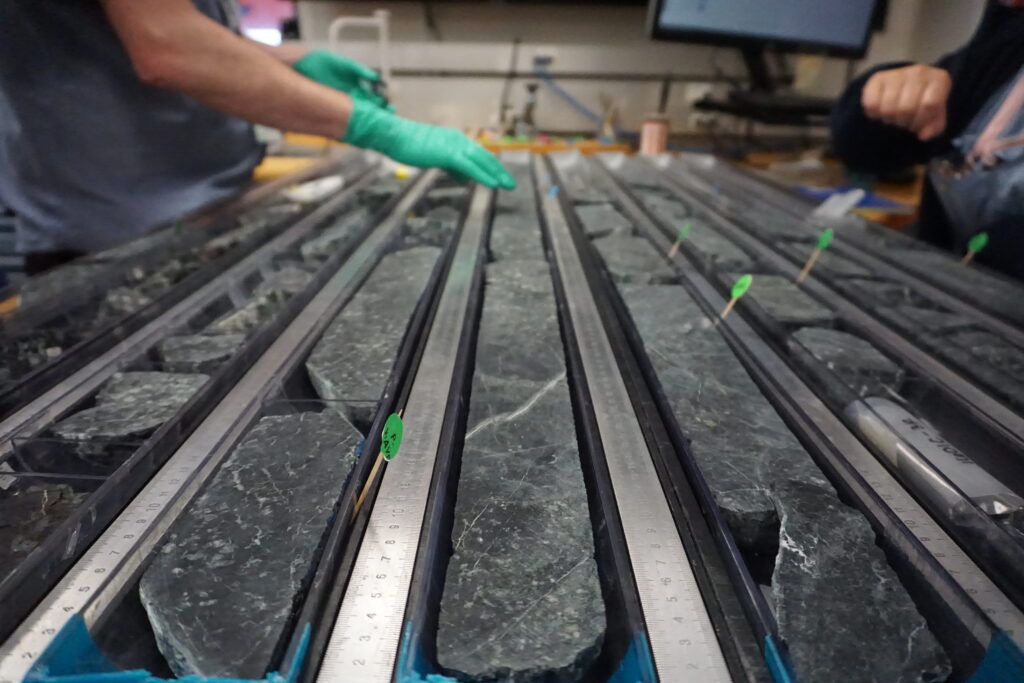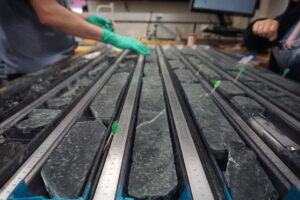
Record Hole in Mantle Rock
(Written by Communications Officer Sarah Treadwell)
We are now entering week 6 of Expedition 399. We have a staggering and record-breaking amount of serpentinite mantle rocks coming up from hole U1601C. This hole is located at our proposal site AMDH-2A, approximately 800 meters north of the Lost City Hydrothermal Field along the Atlantis Massif. Previous experiences here had suggested that a deep hole at this location would likely be unsuccessful; however, as of May 12th, 2023, we had passed 500 meters below the sea floor with an average recovery of 69%.
Currently, as of May 21, 2023, we are now approaching 1,000 meters dug down below the sea floor. The previous record for a hole drilled in serpentinite peridotite was at a depth of 200.8 meters, set in December 1993 in Hole 920D, cored during ODP Leg 153. The magnitude of the history occurring has most certainly not been lost on our science party, many of whom are seasoned field researchers and believe this will be incredibly important data for many generations of scientists to come.

On Earth, mantle rock is normally extremely difficult to access. The Atlantis Massif offers a rare advantage to gain access to it, as it is comprised of mantle rocks that have been brought up closer to the surface through the process of ultra-slow seafloor spreading. This enables the JOIDES Resolution the unique opportunity to drill and bring up this mantle rock which has not been altered by weathering on the surface, allowing scientists to provide us with new insights into the composition and structure of the mantle, as well as processes that take place within it.
This expedition exemplifies the crucial role for deep ocean drilling to the scientific community now and in the future. The samples and data we are generating could not be obtained by other means. The collaborative approach of IODP allows a multi-faceted perspective that is essential for understanding the feedback among igneous, tectonic, hydrothermal, and biological processes, essential for reconstructing the necessary conditions for creating the building blocks of life.
Would love to know more about the serpentine alteration species and any further research that comes out of this drill core. I’m curious about how the serpentine present in un-obducted mantle differs from obducted and weathered mantle. -Luke